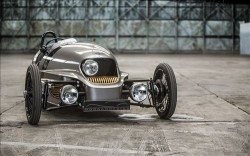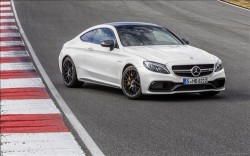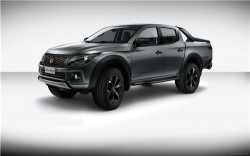Wallpapers
 Few cars are as instantly recognizable as the Mini. Loved for its
diminutive dimensions and cheerful good looks, the British-born car has
inspired passionate devotion both in the U.S. and abroad. The brand was
briefly discontinued, but was revived in 2002 with help from BMW.
Successfully paying homage to the original Mini Cooper of the 1960s,
the reincarnated Cooper combines an athletic, BMW-engineered chassis
with a space-efficient interior and a generous standard features list.
Few cars are as instantly recognizable as the Mini. Loved for its
diminutive dimensions and cheerful good looks, the British-born car has
inspired passionate devotion both in the U.S. and abroad. The brand was
briefly discontinued, but was revived in 2002 with help from BMW.
Successfully paying homage to the original Mini Cooper of the 1960s,
the reincarnated Cooper combines an athletic, BMW-engineered chassis
with a space-efficient interior and a generous standard features list.
The history of the Mini make began in 1959. The original Mini motorcar
was produced by the British Motor Corporation (BMC) in England and its
mission was to be a lightweight, agile four-passenger car that took up
minimal space. In a sense, the brand was born out of necessity. The
United Kingdom was subject to fuel rationing in the wake of the Suez
crisis, and British consumers clamored for vehicles that offered
optimum fuel efficiency.
The car was originally sold under BMC's Austin and Morris brands; the
Mini name didn't make an appearance until 1961. Although it had just 34
horsepower, the Mini was the ideal urban car and proved popular in
crowded European cities. In 1961, John Cooper, a man who built Formula
One racecars, put his magic hands on the Mini and the result was the
ferocious Mini Cooper. His Cooper S model had (at 76 horsepower) more
than double the output of the standard Mini. That infusion of power,
along with suspension tweaks and some really good driving, had Mini
winning the Monte Carlo Rally four years in a row (1964-'67). The
marque landed on American shores in 1962.
The '60s truly was the decade of the Mini motorcar. New variations on
the car's theme came with the introduction of vehicles like the Mini
Pickup and the Mini Moke, a vehicle that resembled a quirky cross
between a Mini and a Jeep. The car's abbreviated proportions are even
rumored to have played a part in sparking a fashion trend; the
miniskirt raised hemlines and became emblematic of an era. Mini
motorcars tore up the asphalt on the silver screen, with the brand's
appearance in the 1969 film, The Italian Job.
By the end of the decade, more than 2 million Mini motorcars had been
produced. Sadly, the vehicle was pulled from the United States in 1968,
in the wake of strict new emissions regulations.
Though no longer available in the U.S., Mini remained in production in
Europe through the '70s and '80s. By the mid-'80s, more than 5 million
Minis had been produced worldwide. In 1994, the brand was acquired by
the BMW Group. The marque went on hiatus in 2000, but was resurrected
(and brought back to American shores) in 2002 with the launch of the
entry-level, front-drive Mini Cooper hatchback. Thoroughly modern in
every way, right down to its BMW-engineered suspension, steering and
brakes, the Mini Cooper is sold alongside its cousins at BMW
dealerships. Today, the Mini stands as the most successful British car
in history. Though "Mini fever" has cooled somewhat since its
reintroduction a few years ago, the brand still inspires adoration from
buyers taken with its unique looks, winning performance and the
convenience of its extremely compact dimensions.
Views: 28315
[Source: Edmund's ]
Latest Wallpapers
Following is the list of recent pictures updates on our site.
DieselStation Social
















